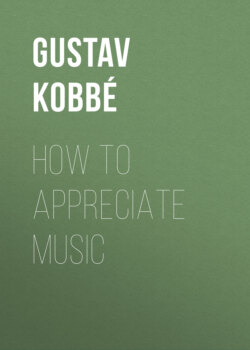Читать книгу How to Appreciate Music - Gustav Kobbé - Страница 18
На сайте Литреса книга снята с продажи.
Bach in Modern Music.
ОглавлениеOne of the most remarkable phenomena in the history of the art—and a generalization like this is as much in place in discussing pianoforte music as elsewhere, because the instrument has had so much to do with the evolution of music—is the gap between Bach and modern music. While the following must not be taken too literally, it is true in general that Bach had little or no influence on the age that immediately came after him, the classical age of music, that age which we sum up in the names of Haydn, Mozart and Beethoven, the age of the sonata and the symphony. The three masters mentioned probably would have developed and 51 composed much as they did had Bach never lived. But when a more modern composer, a romanticist like Wagner, wanted to enrich the means of musical expression handed down to him from the classical period, he reached back to Bach and combined Bach’s teeming counterpoint with the harmonic system which had been inherited from Beethoven. To understand just what this means, to appreciate the influence Bach has had upon modern music and why he had little or none on the classical composers, it is necessary for the reader to have at least a reasonably clear conception of what that counterpoint is and wherein it differs from harmony; for with Bach counterpoint reached its climax, and all the possibilities of the style having been exhausted by him, music of necessity took a turn in another direction under the classicists and developed harmonically instead of contrapuntally; so that it can be said that modern music derives its counterpoint from Bach, its harmony from Beethoven, and its combination of the two systems from Wagner.
There is another reason why the meaning of counterpoint should be explained and the difference between counterpoint and harmony be made clear to the reader now. Nearly all the early music, the music that preceded Haydn, Mozart and Beethoven, and that sometimes is to be found on recital programs, is contrapuntal—written in counterpoint. As I have said before, it would be much easier to start with the sonata form, with harmony instead of counterpoint, for of the two harmony is the simpler. But we must “face the music”—the music of the old contrapuntal composers—and 52 the best way to do this is to explain what harmony and counterpoint are and wherein they differ.
